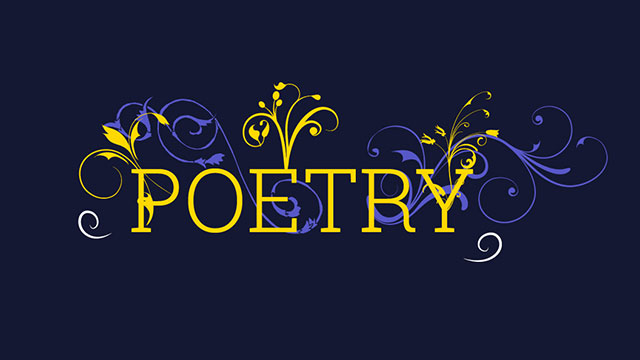Reading poetry, writing poetry, poems across the curriculum, and poems in the movies…yes, movies…
Table of Contents
WRITING AND READING POETRY: FICTION
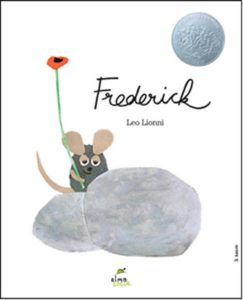
|
In Leo Lionni’s Frederick (Dragonfly Books, 1972), the title character – an enchanting little field mouse – doesn’t help the other mice lay in food for the winter; instead dreamy Frederick collects colors and words “because winter is gray.” In the bleak dead of winter, Frederick comes into his own, warming and cheering the other mice with his poetic descriptions of spring and summer. For ages 4-8. |
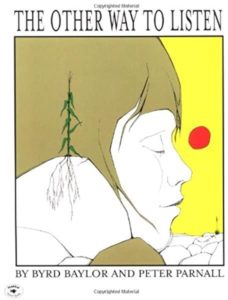
|
Byrd Baylor’s The Other Way to Listen (Aladdin, 1997) is a poem about learning how to listen to the natural world. “Teach me,” a little girl says to a wise old man, and gently he explains that it’s a matter of taking time, being quiet, and asking yourself hard questions. A good beginning for all poets. For ages 5-9. |
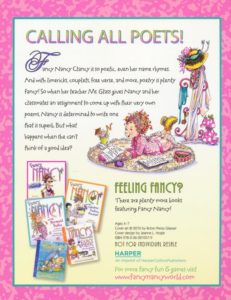
|
In Jane O’Connor’s Fancy Nancy: Poet Extraordinaire (HarperCollins, 2010), Nancy’s class is studying poetry and Nancy – complete with toga costume and poetry-palace clubhouse – prepares to become a prize poet. It’s a great book for poetry project ideas, among them conducting a poetry survey (Nancy’s little sister likes “Diddle, Diddle, Dumpling;” her father likes “Blowin’ in the Wind;” her mother’s pick is “Annabel Lee”), making a paper “poet-tree,” and creating a personal poetry anthology. For ages 6-9. |
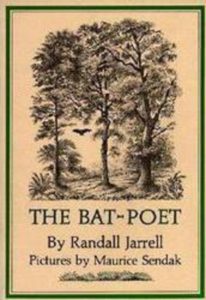
|
Randall Jarrell’s The Bat-Poet (HarperCollins, 1994) is the story of a little brown bat (“the color of coffee with cream in it”) who loves the world of daytime and invents poems about all he sees and learns there – though ultimately, as winter comes, and he and his admiring friend, the chipmunk, prepare to hibernate, his final poem celebrates his familiar world of bats. A wonderful book about the true nature of poetry for ages 8 and up. |
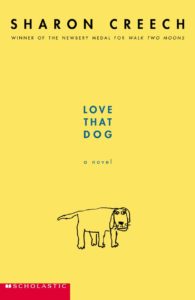
|
In Sharon Creech’s Love That Dog (Perfection Learning, 2003), Jack – a student of the incomparable Ms. Stretchberry in Room 105 – is, in spite of himself, learning to love poetry. The book – entirely written in free verse – begins with Jack’s objections to all things poetic (“I don’t want to/because boys/don’t write poetry./Girls do.”), continues through his strictures on famous poets (“I think Mr. Robert Frost/has a little/too/much/time/on his/hands”), to his discovery of a poem by Walter Dean Myers (“Love That Boy”) that strikes a chord – and helps him deal with the heartbreaking loss of his yellow dog, Sky. For ages 8 and up. |
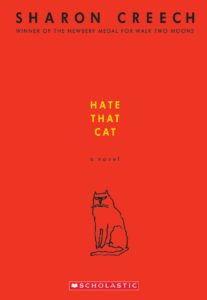
|
In the sequel, Hate That Cat (HarperCollins, 2010), poetry helps Jack come to terms with his deaf mother and a particularly awful neighborhood cat. In both books, the poems used in Ms. Stretchberry’s class appear in an appendix at the back. |
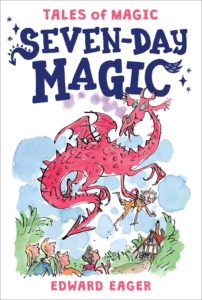
|
In Edward Eager’s Seven-Day Magic (Harcourt, 1999), John, Susan, Barnaby, Abbie, and Frederika check a mysterious red book out of the library, which plunges them into seven days of (often nearly disastrous) magical adventures. One of these nearly costs their father his job, though he’s saved by Abbie, a poet (though she never shows her poems to anybody), with the help of a famous poet she encounters in the park. For ages 8-12. |
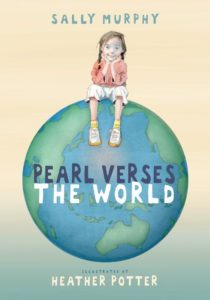
|
In Sally Murphy’s Pearl Verses the World (Candlewick, 2011) – written in Pearl’s voice in free verse – Pearl doesn’t fit in at school: she is a group of one. Her teacher, Mrs. Bruff, wants the class to write poems that rhyme, but Pearl’s don’t (“Rhyme is okay sometimes/but my poems don’t rhyme/and neither do I”). At home, her beloved grandmother sometimes doesn’t remember who Pearl and her mother are. When her grandmother dies, Pearl comes to terms with her death through a poem (“…She wasn’t here/For long enough/But I am glad/That she/Was here/At all”) – and comes to learn that she can maintain her individuality while also becoming part of a group. And Mrs. Bruff admits that poems don’t have to rhyme. A gentle book about difficult issues for ages 8-12. |
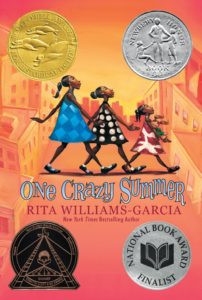
|
In Rita Williams-Garcia’s One Crazy Summer (Amistad, 2011), set in the summer of 1968, eleven-year-old Delphine and her younger sisters Vonetta and Fern have been shipped to California to spend time with Cecile, the mother who abandoned them shortly after Fern’s birth. Cecile is a poet who wants nothing to do with motherhood; in fact, she turns the girls out of the house for most of the day, sending them to a community camp run by the Black Panthers. It’s a wonderful story about political activism, racial tension, family and freedom, understanding, and growing up – all culminating when the three girls recite one of Cecile’s poems at a Black Panther rally in the park. A great read for ages 9-13. |
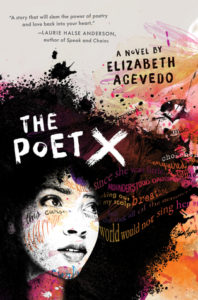 |
This list of 12 Terrific Novels in Verse for middle-grade readers includes Elizabeth Acevedo’s The Poet X, Thanhha Lai’s Inside Out and Back Again, Jacqueline Woodson’s Brown Girl Dreaming, and Kwame Alexander’s Booked. |
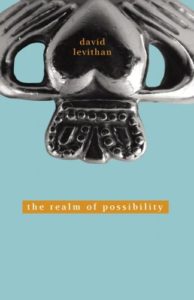 |
YA Novels in Verse includes such picks as David Levithan’s The Realm of Possibility, Walter Dean Myers’s Street Love, and Ron Koertge’s Shakespeare Makes the Playoffs. |
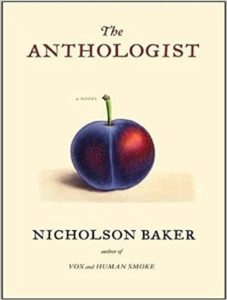
|
Poet Paul Chowder, the protagonist of Nicholson Baker’s The Anthologist (Simon & Schuster, 2010) is struggling to write an introduction to an anthology of rhyming poems in the teeth of a string of troubles, among them the loss of his girlfriend. The book is stuffed with observations on the nature of poetry and stories about famous poets (and accounts of Chowder’s fruitless attempts to clean his office and deal with the mouse who lives behind his stove). For teenagers and adults. |
